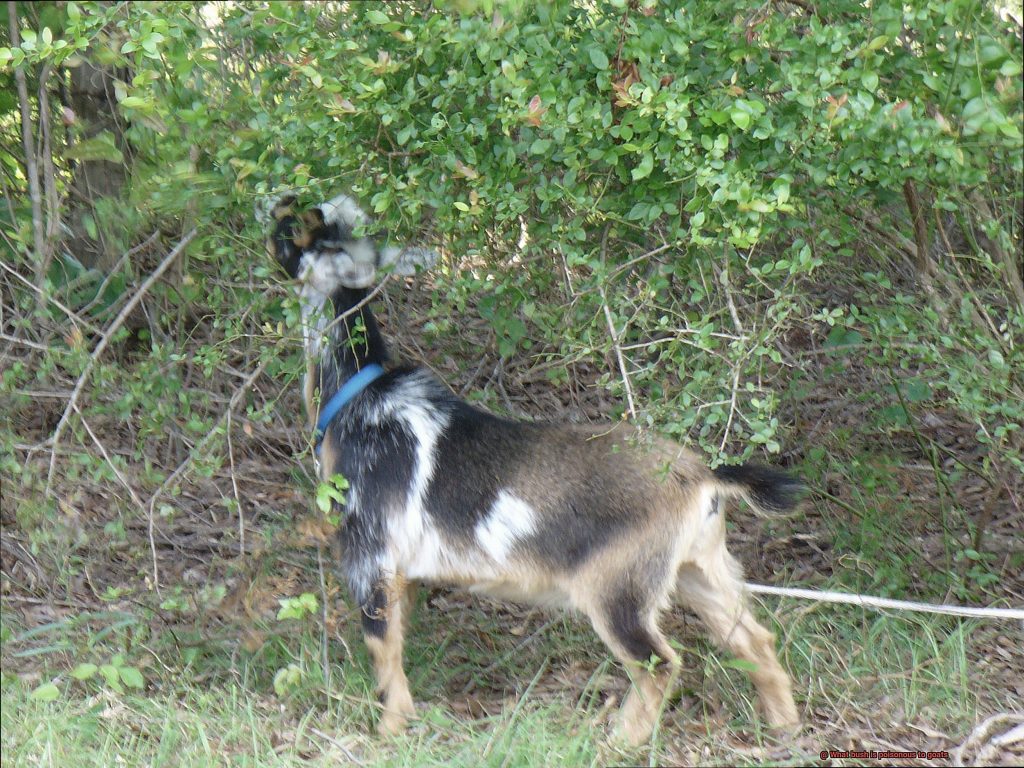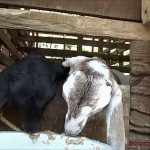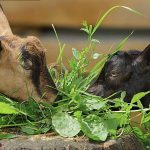As a goat owner, you know that keeping your furry friends happy and healthy is a top priority. However, did you know that some bushes can be deadly to goats? That’s right – certain types of plants can pose a serious threat to your goats’ well-being and even lead to fatal consequences.
In this article, we’ll explore the various types of poisonous bushes that can harm your goats and what signs to watch out for if they accidentally ingest them. But first, let’s start with an intriguing fact: did you know that even the beautiful lilac bush can be toxic to goats? While it may add aesthetic value to your goat pasture or yard, it could also have deadly consequences if ingested.
Other poisonous bushes include the dangerous Nightshade bush, which produces small dark berries that can cause paralysis and death in your goats. The Rhododendron bush is another culprit that can cause weakness, vomiting, and even death. As a responsible goat owner, it’s crucial to learn how to identify these harmful plants so you can keep your goats safe from harm.
So, let’s get started now.
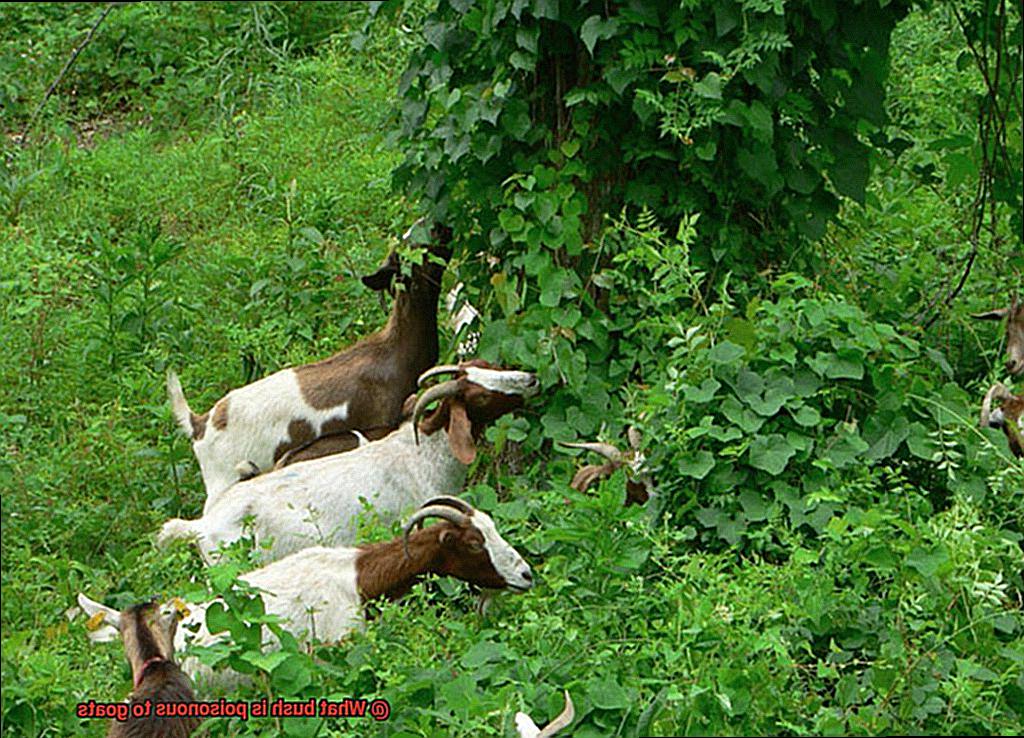
Common Poisonous Plants for Goats
Contents
That’s where I come in as an expert on the topic of common poisonous plants for goats. Let’s take a closer look at what you need to know.
First and foremost, there are numerous plants that are toxic to goats, making it crucial for goat owners to be aware of them to keep their animals safe. Some of the most common poisonous plants for goats include Azaleas, Rhododendrons, Holly, Yew, Red Maple, and Poison Ivy. These plants contain toxins that can cause various symptoms in goats, including diarrhea, vomiting, weakness, and even death.
It’s important to note that not all parts of these plants are toxic to goats. For example, while the leaves and flowers of Azaleas and Rhododendrons contain grayanotoxins that can cause heart failure in goats, the nectar from these plants is reportedly safe for them to consume. Similarly, while the Red Maple tree’s leaves are poisonous to goats, the tree’s bark and wood are safe for them to eat.
However, there are other plants that goat owners should be wary of as well. Some common plants that are safe for humans can be toxic to goats. For instance, tomato plants contain a toxin called solanine that can cause digestive problems in goats. Similarly, onions and garlic contain compounds that can damage red blood cells and lead to anemia in goats.
It’s crucial for goat owners to become familiar with these common poisonous plants for goats to keep their animals safe. Even if you think you are familiar with all of the toxic plants in your area, it’s always best to consult with a veterinarian or local expert on plant toxicity before planting anything in or around your goat’s grazing area.
Rhododendron and Azaleas
These popular ornamental shrubs contain grayanotoxins that can be fatal to goats if ingested.
Goats are natural browsers, and they love to roam and nibble on plants as they go. Unfortunately, this behavior can lead them straight to rhododendrons or azaleas, which are commonly found in residential and commercial landscapes. This makes these toxic plants easily accessible to goats that may be kept nearby.
If you suspect that your goat has ingested rhododendrons or azaleas, it is crucial to seek veterinary care immediately. Time is of the essence in treating these cases, and symptoms such as gastrointestinal distress, weakness, lethargy, and even death can occur rapidly.
To prevent rhododendron and azalea toxicity in goats, it is important to ensure that these plants are not present in areas where goats graze or roam. If you have these plants on your property, be sure to fence them off or take other measures to prevent access by your goats. Additionally, consider selecting alternative landscaping plants that are safe for goats if you plan to keep them nearby.
Yew
However, it’s not always easy to know what dangers lurk in the environment. One such danger is yew, a highly toxic plant that can be deadly to goats if ingested.
It may surprise you to learn that even though yew looks appealing and attractive to goats, all parts of the plant are poisonous. This includes the bark, leaves, and berries. The toxicity of yew comes from a group of chemicals called taxines, which can quickly affect the heart and nervous system of an animal.
Ingesting even small amounts of yew can be fatal to goats. Symptoms of yew poisoning include muscle tremors, difficulty breathing, seizures, and sudden death. If you suspect your goat has eaten any part of a yew plant, it is crucial to seek veterinary care immediately.
Prevention is the best approach when it comes to keeping your goats safe from yew poisoning. Start by removing any yew plants from your pasture or grazing areas. Also, keep your goats away from any landscaping that includes yew shrubs. By educating yourself on what other plants in your area may be toxic to goats, you can take steps to keep them away from those as well.
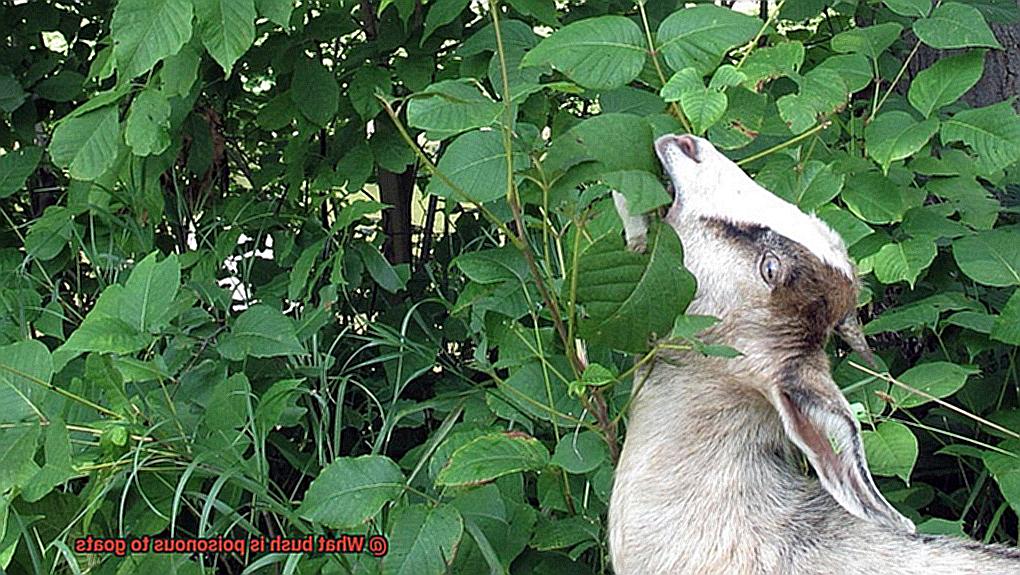
Oleander
Meet oleander, a highly toxic bush that can cause severe gastrointestinal distress, cardiac failure, and even death in goats.
Every part of the oleander plant, from the leaves to the roots, contains deadly toxins. If ingested, goats can suffer from colic, diarrhea, vomiting, weakness, tremors, seizures, and respiratory distress. In the most severe cases, goats may collapse or die suddenly within hours of ingestion.
To prevent oleander poisoning in your goats, it’s essential to keep them away from any areas where the plant grows. This may involve removing existing oleander bushes or fencing off areas where the plant is present. Proper disposal of any trimmings or fallen leaves from oleander bushes is also crucial to prevent accidental ingestion by goats or other animals.
If you suspect that your goat has ingested oleander, time is of the essence. Seek veterinary care immediately for the best chance of recovery. Treatment may involve inducing vomiting or administering activated charcoal to absorb the toxins. Intravenous fluids and medications to support cardiac function may also be necessary.
Mountain Laurel
While you may already know about some common toxic plants that can be dangerous for goats, such as oleander, it’s important to also be aware of the potential dangers of Mountain Laurel.
Mountain Laurel, also known as Kalmia latifolia, is a stunning evergreen shrub that can be found in the eastern region of North America. Although it’s a popular choice for ornamental purposes due to its beautiful flowers, it’s important to note that this plant contains a toxic compound called grayanotoxin. This harmful substance can lead to serious health issues in goats and other livestock.
If your goats consume this toxic plant, they may experience a range of symptoms including nausea, vomiting, diarrhea, excessive salivation, difficulty breathing, trembling, seizures, and even collapse. In order to protect your furry friends from this danger, it’s crucial to seek veterinary care immediately if you suspect they have ingested Mountain Laurel or any other toxic plant.
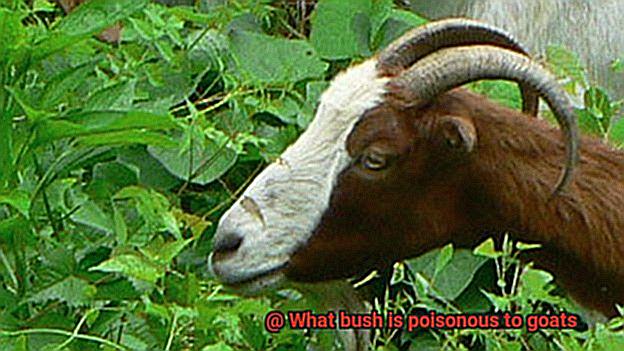
Preventing Mountain Laurel poisoning in goats is critical and involves removing the plant from their grazing area and ensuring they cannot access it. You should also educate yourself on other toxic plants in your area to prevent accidental ingestion.
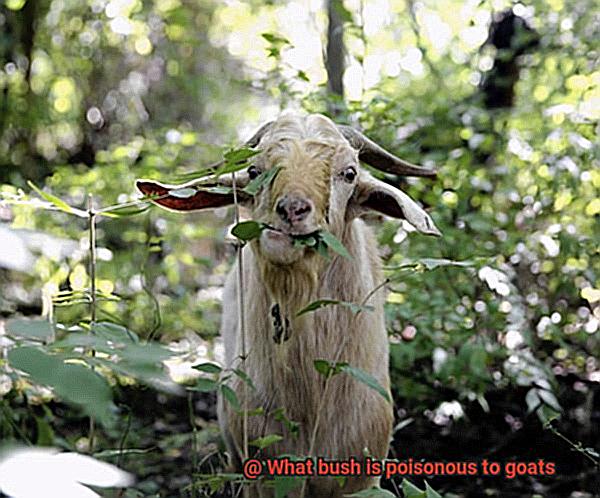
Symptoms of Poisoning in Goats
Poisoning can quickly occur when goats ingest poisonous plants, and the effects can range from minor discomfort to life-threatening conditions. Some common symptoms to look out for include drooling, diarrhea, vomiting, lethargy, loss of appetite, and abdominal pain.
One of the most dangerous plants for goats is the oleander bush. This plant is highly toxic to goats and can cause severe symptoms such as colic, muscle tremors, and heart failure. Other bushes that are poisonous for goats include rhododendron, azalea, yew, and black walnut.
If you suspect that your goat has ingested a toxic plant, it’s crucial to act quickly by contacting a veterinarian immediately. The vet can provide the necessary treatment and care needed to ensure your goat recovers fully. In some cases, inducing vomiting or administering activated charcoal may be required to eliminate toxins from the goat’s system.
Prevention is key when it comes to keeping your goats safe from poisonous bushes. Ensure that there are no toxic plants in their grazing area and provide them with a variety of safe forage options. Knowing which plants are toxic to goats can help prevent accidental ingestion and keep your goats healthy and happy.
yRvtsjBzjsM” >
Conclusion
As a goat owner, it’s crucial to be knowledgeable about the various types of bushes that can be poisonous to your furry friends. Some plants can pose a serious threat to your goats’ health, and even lead to fatal consequences. In this article, we’ve delved into some common poisonous bushes that can harm goats and what signs to watch out for if they accidentally ingest them.
Popular ornamental shrubs like Rhododendrons and Azaleas contain grayanotoxins that can prove lethal to goats if ingested. Yew is another highly toxic plant that can cause muscle tremors, difficulty breathing, seizures, and sudden death in goats. Oleander is yet another bush that contains deadly toxins in every part of the plant from leaves to roots. Mountain Laurel is also dangerous as it contains grayanotoxin which leads to serious health issues in livestock.
Prevention is key when it comes to keeping your goats safe from poisonous bushes. Ensure that their grazing area is free of toxic plants and provide them with a variety of safe forage options. Knowing which plants are toxic to goats can help prevent accidental ingestion and keep your goats healthy and happy.
If you suspect that your goat has ingested any poisonous bush, seek veterinary care immediately as time is of the essence in treating these cases. Symptoms such as gastrointestinal distress, weakness, lethargy, tremors, seizures or even death can occur rapidly. By educating yourself on what other plants in your area may be toxic to goats, you can take steps to keep them away from those as well.
In conclusion, being aware of the bushes that are harmful to your goats is crucial for their safety and well-being.

